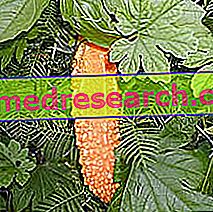RANIDIL ® is a drug based on Ranitidine hydrochloride
THERAPEUTIC GROUP: Antacids, antiemetics and peptic antiulcer - H2 antagonist
IndicationsAction mechanismStudies and clinical effectiveness Usage and dosage instructionsWarnings Pregnancy and lactationInteractionsContraindicationsUndesirable effects
Indications RANIDIL ® - Ranitidine
RANIDIL ® is used in the clinical field in the treatment of duodenal ulcer, benign gastric ulcer, recurrent ulcer, reflux esophagitis, gastritis, duodenitis and all other pathologies sustained by gastric hypersecretion.
Mechanism of action RANIDIL ® - Ranitidine
Ranitidine, the active ingredient of RANIDIL ®, represents the molecule belonging to the category of histamine H2 receptor antagonists, generally more used in the clinical setting in the treatment of diseases sustained by increased chloridopeptic secretion.
Taken orally, Ranitidine is abundantly absorbed at the level of the gastro-enteric tract, reaching its maximum plasma concentration in a few hours from the assumption to distribute mainly to the gastric level where by interacting with the histamine receptors H2 limits its activity.
This biological action is realized with the reduction of gastric secretion both in rest conditions and following vagal stimulation, from gastrin or from food, with the consequent reduction in the volume of gastric juice and pepsin.
All this translates into a greater protection of the gastric mucosa from the inflammatory stimuli exerted by gastric hypersecretion, therefore in a better control of the associated symptomatology.
After its activity, Ranitidine, mainly in unchanged form, is eliminated through the urine following a clear process of glomerular filtration and active tubular secretion.
Studies carried out and clinical efficacy
RANITIDINE ANAPHYLAXIS
Eur Ann Allergy Clin Immunol. 2012 Dec; 44 (6): 253-5.
Recent study that reports the development of a serious intraoperative IgE mediated to Ranitidine, responsible for a serious decline of the clinical picture of the patient undergoing surgical treatment.
THE CLINICAL EFFECTIVENESS OF RANITIDIN
World J Gastroenterol. 2012 May 21; 18 (19): 2390-5. doi: 10.3748 / wjg.v18.i19.2390.
Study demonstrating that the use of Ranitidine for four weeks could significantly improve the clinical condition of patients suffering from non-erosive reflux disease, guaranteeing a marked improvement in quality of life.
DAMAGE BY PEDIATRIC USE OF RANITIDINE
Pediatrics. 2012 Jan; 129 (1): e40-5. doi: 10.1542 / peds.2011-0796. Epub 2011 Dec 12.
Very interesting study that demonstrates how Ranitidine therapy can be associated with an increased risk of infections, necrotizing enterocolitis and death in newborns, thus suggesting the highly studied use of this drug even during pregnancy and in the subsequent breastfeeding period beyond that in the first weeks of life.
Method of use and dosage
RANIDIL ®
Tablets for oral use 75 - 150 - 300 mg of Ranitidine Hydrochloride;
Effervescent tablets of 150 - 300 mg of Ranitidine Hydrochloride;
150 mg syrup of Ranitidine hydrochloride per 10 ml of product.
The dosage and timing of recruitment must necessarily be defined by your doctor after carefully evaluating the patient's overall health status, the severity of his clinical picture and the therapeutic goals to be achieved.
Therefore, although the dosage generally used is 300 mg per day divided into two assumptions, it is the duty of the physician to formulate a therapeutic protocol suitable for each circumstance.
In any case, it is advisable to take RANIDIL ® on a full stomach.
Warnings RANIDIL ® - Ranitidine
RANIDIL ® therapy should be preceded by a careful medical examination aimed at assessing the prescriptive appropriateness and the possible presence of contextual pathologies, such as for example the neoplastic diseases of the stomach, whose symptomatology could be masked by the therapeutic action of Ranitidine, thus delaying the time of diagnosis.
The use of this drug should be done with particular caution in patients with liver and kidney diseases, considering in these cases the need to adjust the doses normally used.
It would also be advisable to request the supervision of your doctor during the entire therapeutic process.
It is recommended to keep the medicine out of the reach of children.
PREGNANCY AND BREASTFEEDING
Although there is currently no scientific evidence concerning the safety of Ranitidine for fetal health, Ranitidine's ability to easily cross both the blood-placental barrier and the mammary filter, thus exposing itself to the fetus and infant, greatly limits the clinical uses of Ranitidine during pregnancy and subsequent breastfeeding period, which should be used under close medical supervision.
Interactions
In order to preserve the pharmacokinetic and pharmacodynamic characteristics of Ranitidine, while reducing the incidence of possible side effects, the patient receiving RANIDIL ® should pay particular attention to the simultaneous intake of:
- Antacids, able to reduce the absorption of Ranitidine;
- Diazepam, propanolol, theophylline and lidocaine, whose metabolism could be influenced by the inducing action on the cytochromial systems of Ranitidine;
- Drugs eliminated via the kidney, whose elimination kinetics could be further enhanced by Ranitidine.
Contraindications RANIDIL ® - Ranitidine
The use of RANIDIL ® is contraindicated in case of hypersensitivity to the active ingredient or to one of its excipients or to other structurally related molecules.
Undesirable effects - Side effects
Although Ranitidine is generally well tolerated, its use, especially when prolonged over time, could lead to the appearance of constipation, nausea, vomiting, diarrhea and abdominal pain.
The potential adverse reactions to the nervous system and liver and all hypersensitivity reactions to the active ingredient are decidedly more rare.
Note
RANIDIL ® is a prescription drug prescribed by a doctor.



